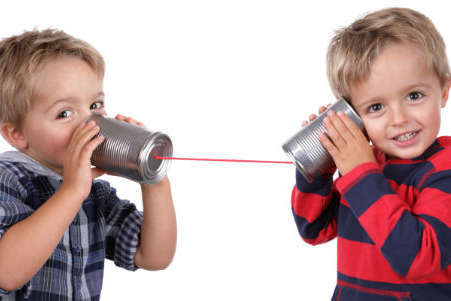
Promoting Speech & Language In Infants!
21 Apr 2015 | 5 min Read
Medically reviewed by
Author | Articles
A language enriched home environment is crucial to a child’s development. Research has shown that children with strong verbal and language skills develop strong reading and writing skills. Parents are their children’s first teachers and are fundamental contributors to their child’s success in learning language. Building communication into your child’s everyday life should not be hard work or stressful for you or your child. It can become a natural part of the time you spend together.
Below are a few strategies for promoting language and communication with your child:
Be face to face
When talking to children its important to be close and face to face so that they can read your facial expressions, watch your mouth and hear your voice clearly. Being face to face also ensures that the child is maintaining interest in what you are saying. If your child is communicating, make sure you show you’re listening by body language such as head nods or comments such as “hmm or really?”
Talk slowly, clearly, simply and use appropriate levels of vocabulary
Using new words is important but sometimes using too many new words are confusing to a child. It’s important to use vocabulary that’s appropriate to a child’s age and level of understanding and use. There is no formula to know what words you can use for what age – but as an overarching principle it’s important to remember to keep things simple but never use “baby talk”.
Talk about everything that you are doing or he/she is doing
Talking to your child during daily routines such as changing diapers, putting on clothes, and feeding, exposes children to language in general. It involves them in learning conversational skills and helps children acquire and use appropriate vocabulary.
Expand and respond to communication attempts
To encourage communication, give your child the opportunity to start the interaction and respond immediately with interest. Respond to every coo, gurgle, sound or word that a child makes. Responses can be in the form of imitating the child, answering the question or making a different sound. Try to expand the child’s utterance as well by adding more context to the language. For example, if the child says, “ball”, you can say “Here’s the ball…big ball”
Play
Communication skills develop better, when you’re having fun together with your child. Play teaches a child to interact with others, problem solve and develop creativity and imagination. The most important part of play is that it teaches a child many new words and ideas in a fun way. Play skills and communication skills develop together. A successful play activity begins when you join in your child’s play and create opportunities for your child to take turns. Play can be a) functional, such as outdoor activities like running, throwing a ball, banging or shaking toys b) constructive, like building blocks and c) pretend play, such as make believe situations with dolls, tea sets, etc.
Tell stories, read books and sing songs
Use books that have big colorful pictures. Story telling doesn’t have to follow the written words in the book. Depending on the child’s attention level, the story can be just 2-3 sentences. Story telling can involve the child by pausing and asking, “what happened next?”
Songs should involve a lot of actions and gestures so even if a child is not yet talking, they can participate by making the actions. You can even pause at the “sound” words of a song to let a child participate. E.g. “Old Mac Donald had a farm, and on that farm he had some cows…” and then wait for your child to respond “moo moo”
Avoid “demand speech”
Take the focus off getting your child to talk. Avoid words such as “say”, and phrases such as “Tell daddy where you went today”. Limit closed ended questions that force a child to one-two word answers. Instead phrase questions such as “tell me about…”.Avoid making your child recite a nursery rhyme, the alphabet or numbers especially in front of another adult.
More than one language
Research has shown that exposing a child to multiple languages from birth increases their ability to be multi-lingual and improves their ability to interpret and tell stories. Bi- and multi-lingual children as young as 7 months can better adjust environmental changes as compared to mono-lingual children. However, decide which family member speaks what language and stick to it. Your child should know which language to expect when he/she is communicating with a person. If your child hears the same person switch back and forth between two different languages, it will be confusing for him/her.
To consult Merzia in person, click here
A


Related Topics for you
Suggestions offered by doctors on BabyChakra are of advisory nature i.e., for educational and informational purposes only. Content posted on, created for, or compiled by BabyChakra is not intended or designed to replace your doctor's independent judgment about any symptom, condition, or the appropriateness or risks of a procedure or treatment for a given person.
